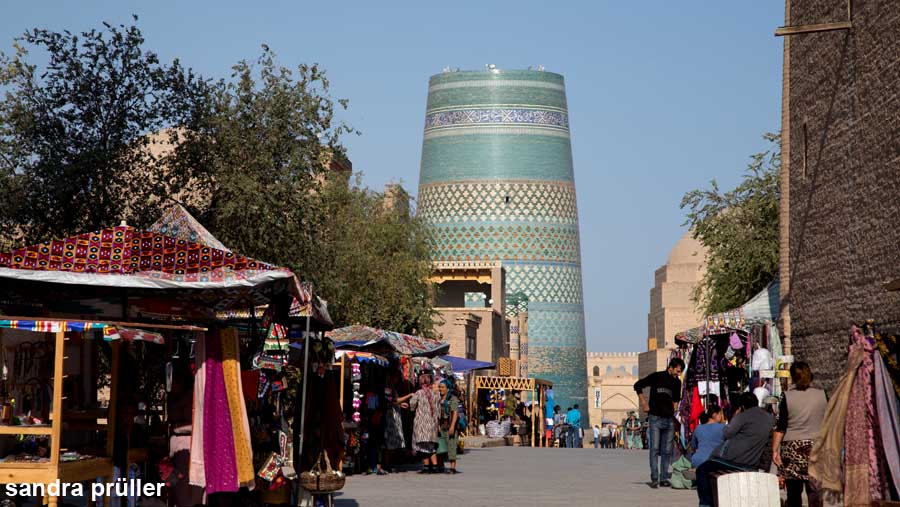
Kalta Minor
The most famous sight of Khiva is the Kalta Minor. The name Kalta Minor means short minaret. The Khan Muhammad Amin wanted to build an 80 m high minaret, it was to be the tallest minaret in the world. Construction began in 1850 but the Khan was killed in a battle 5 years later, so the Kalta Minor was never completed. Nevertheless, the approximately 26 m high tower has become the landmark of Khiva.
The Kalta Minor is completely covered with colored ceramic tiles and stands out from the clay architecture of the historic center. The basic color is turquoise, with blue and green tones mixed. Ribbed patterns and inscriptions ensure a varied design. The Kalta Minor belongs to the Muhammad Amin Khan madrassah.
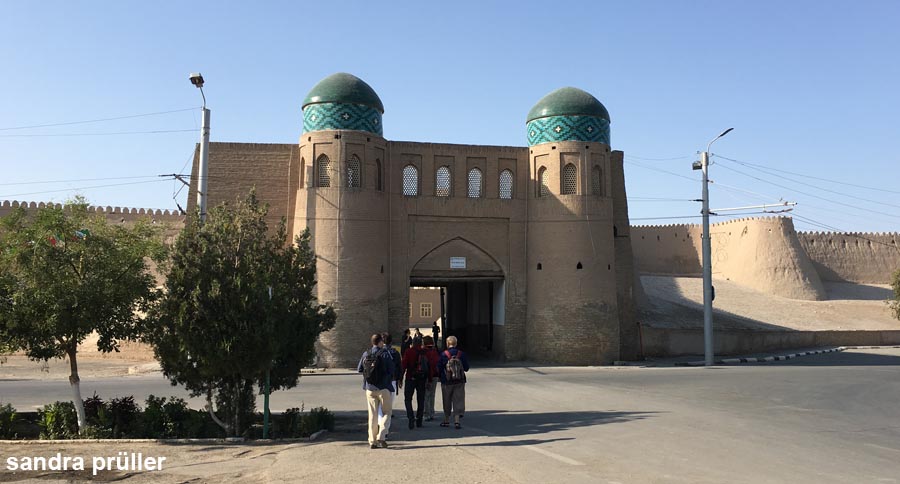
Bakcha Darvaza Gate
The old town of Khiva called Ichan Qala is enclosed by a city wall made of clay. There are 4 city gates, one for each direction. The two gates in the north and east are the best preserved. On the photo you can see the north gate called Bakcha Darvaza, with two tile covered towers.
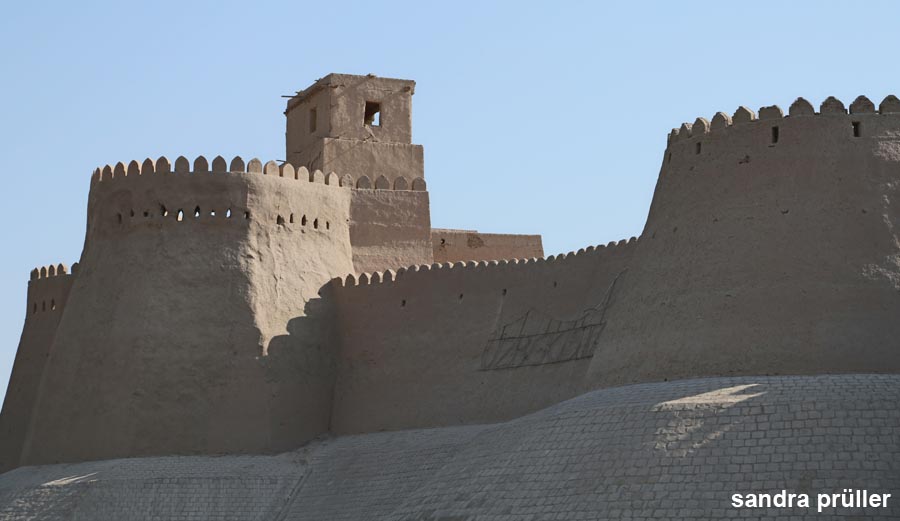
Konya Ark
At the west gate is the citadel of Khiva, the Koyna Ark. The name means "old fortress", however construction of the complex started in 1804. The "old" refers more to the fortress that was previously built here in the 17th century under Khan Muhammad Erenke. Like the city wall, the Konya Ark was built of clay and stands out from the rest of the fortification through a tower.
The fortress was also the Khan's seat of government and functioned like a city within a city. There was a throne room, a harem, the armory, the mint, a treasury, horse stables and several mosques. The summer mosque and the living area of the Khan the most beautiful parts of the fortress. Khiva was conquered by Russia in 1873. The last Khan Said Muhammad Rahim II lived in Koyna Ark until 1910.
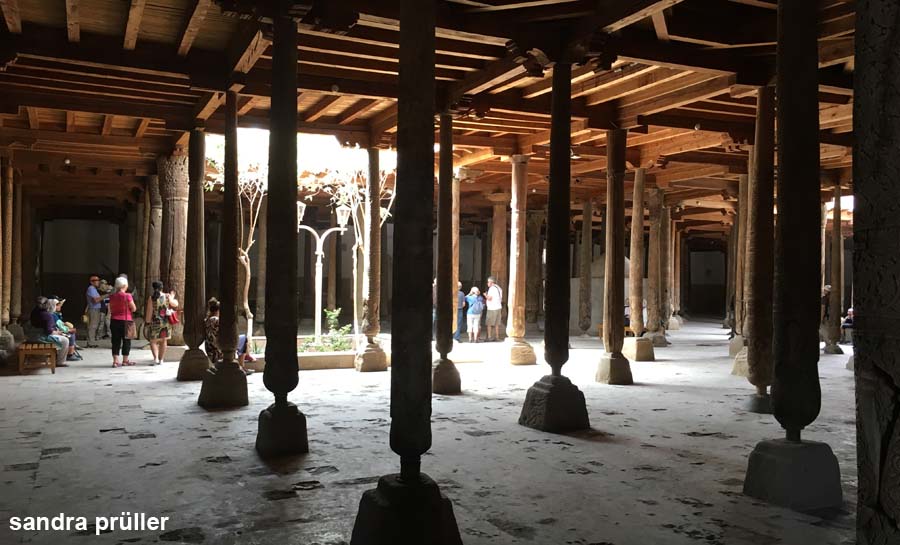
Juma Masjid
The Juma Masjid is a rather unusual mosque for Khiva, it has no open courtyard. There are many supports in the prayer room. The pillar mosque is a rather Arabic architectural style, that is rare in Uzbekistan. Wooden columns and ceilings are rare even in Arabia. This makes the Juma Masjid a precious jewel in Muslim building history. In order to bring light into the dark interior, individual roof fields were left open. The Great Friday Mosque Juma Masjid was built in 1789. Wooden pillars from older buildings and even other cities were used for the construction.
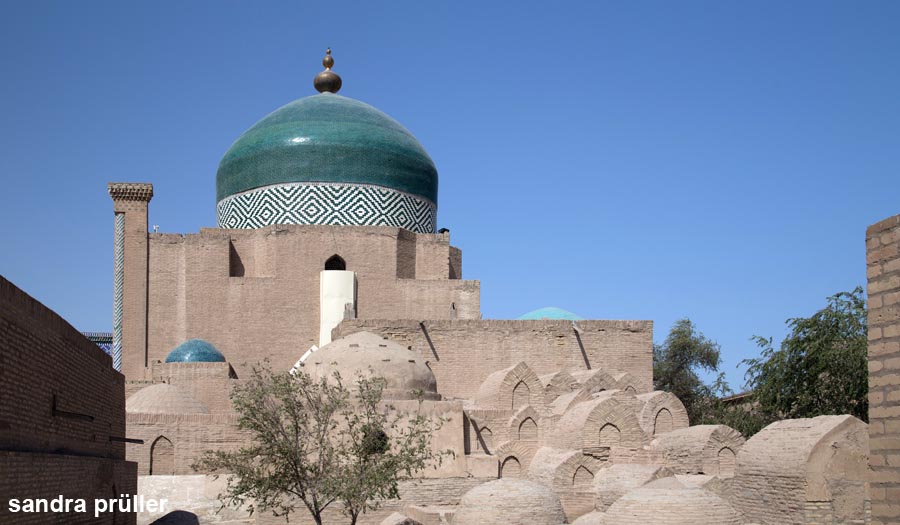
Pahlavan Mahmud Mausoleum
Pahlavan Mahmud was a Sufi teacher and philosopher who lived from 1247 to 1326 and was buried at this place. Sufism is an ascetic, rather spiritual direction of Islam that has parallels to Buddhism. The 4 levels of Sufi include the extinction of sensory perception, the abandonment of individual properties, the abandonment of the ego and the fusion with the divine principle. The mausoleum above the tomb of Pahlavan Mahmud was built in 1810 under Khan Muhammad Rahim I. With its high green dome, the Pahlavan Mahmud Mausoleum is one of the most striking structures in Khiva. The sarcophagus of Muhammad Rahim I and other people is located in the magnificently designed interior.
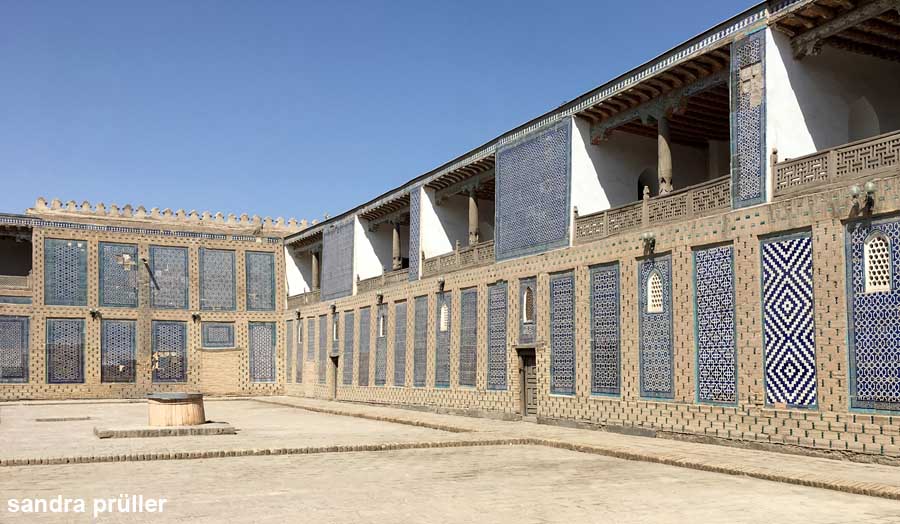
Tosh Hovli Palace
The Tosh Hovli Palace was built by Khan Alla Kuli in 1840. The name Tosh Hovli means stone courtyard. The new palace in the east of the historic old town Ichan Qala takes up the tradition of the court houses from Central Asia. The rooms of the palace are arranged around a long, rectangular courtyard, which is interrupted by Iwan's (to one side open rooms). The Iwan's are elaborately designed and have filigree ceiling decorations. The Tosh Hovli Palace has a total of 3 courtyards, the harem's courtyard (photo) was separated from the other parts of the palace. The palace is well worth seeing because of its rich decoration and the precious materials.
Map attractions in Khiva
ads
Travel Guide Khiva
ads
ads


